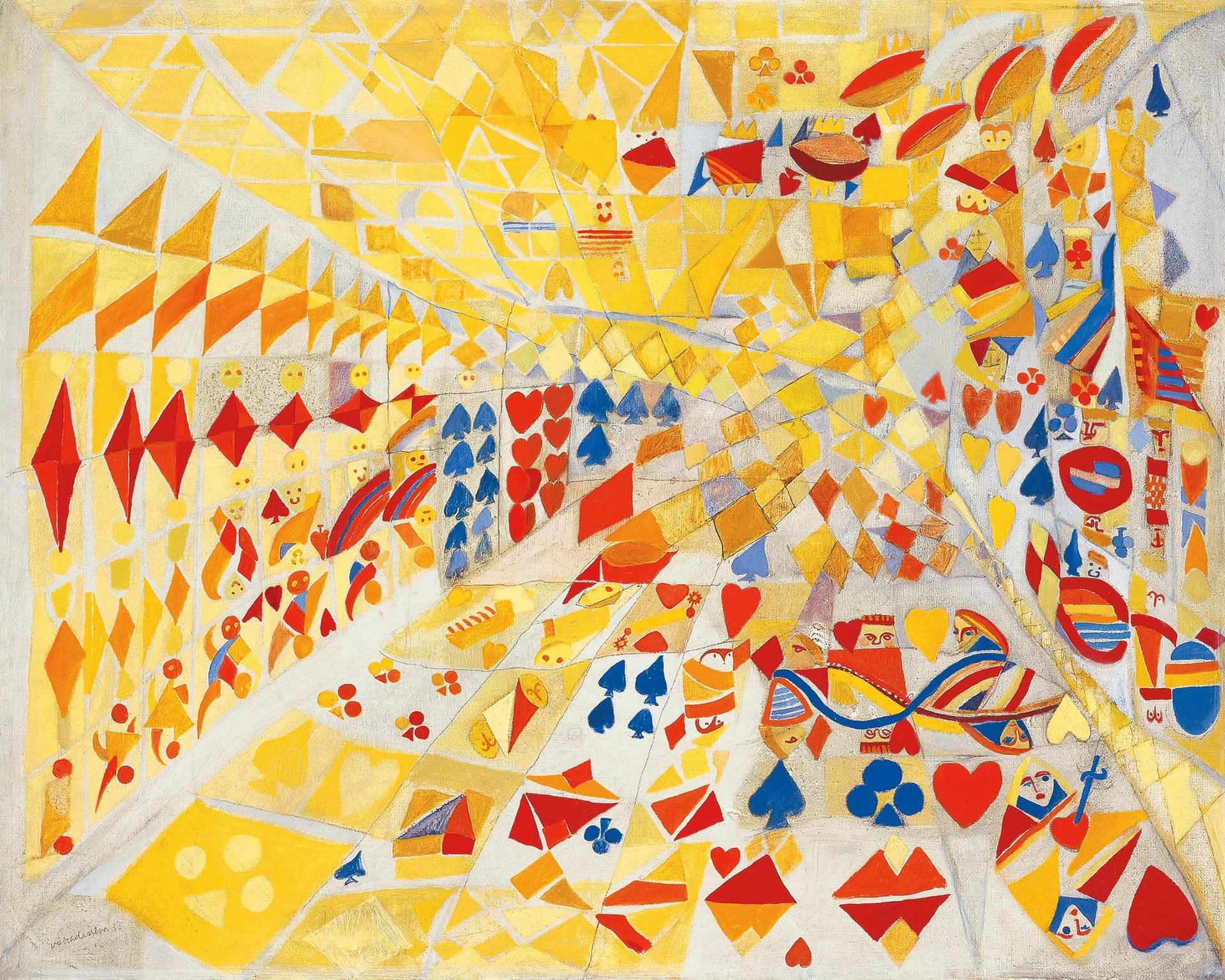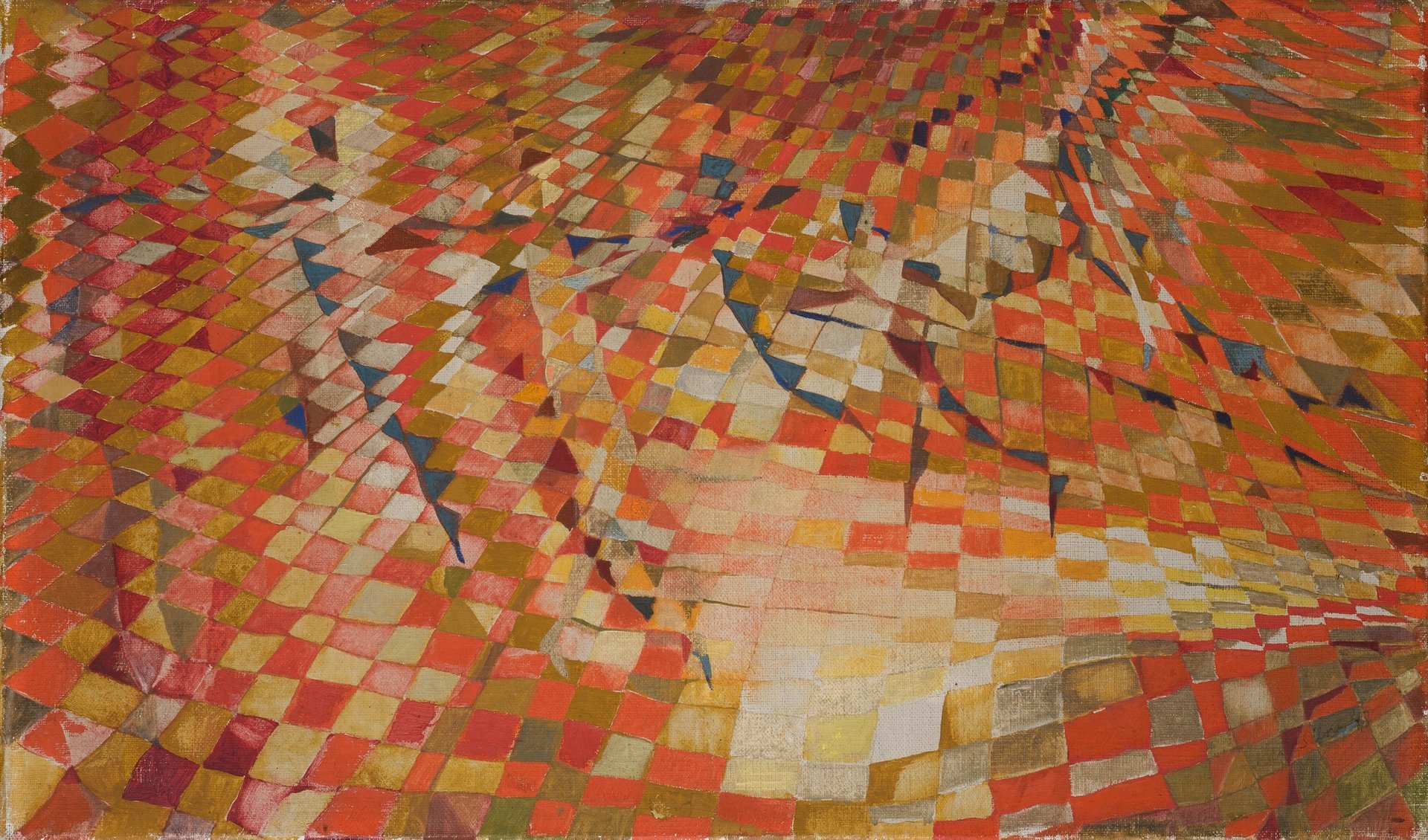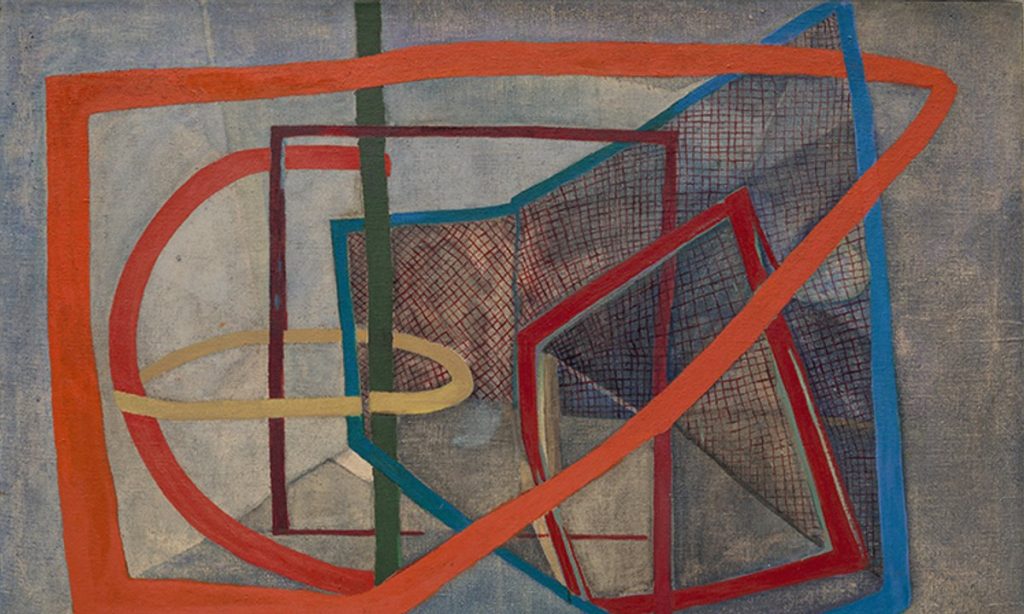A major survey of the Portuguese abstract painter Maria Helena Vieira da Silva (1908-92) opens at the Peggy Guggenheim Collection in Venice this April, before travelling to the Guggenheim Museum Bilbao in the autumn. Though a national treasure in Portugal, and well known in France—where a 2022 retrospective toured Marseille and Dijon—the artist’s wider reputation has dwindled since her death, and she still “needs to be rediscovered by many audiences”, according to the show’s curator, Flavia Frigeri. “There’s so much about what she’s doing and the themes that she’s exploring that are still relevant to us now.”
The exhibition Anatomy of Space, which comprises around 70 works from public and private lenders around the world, takes a broadly chronological view of Vieira da Silva’s evolving visual language. Medieval frescoes, Cubism and Futurism are among her influences, her explorations of movement in space in Le Jeu de cartes (1937) and Figure de ballet (1948) giving way to real and imagined cityscapes. The exhibition will highlight the impact of her student years in Paris and her traumatic exile with her husband, the Hungarian artist Árpád Szenes, in Rio de Janeiro during the Second World War.

Vieira da Silva’s Le Jeu de cartes (1937, the card game) Private collection, France-Portugal
“That soft spot where abstraction meets figuration is something she does very cleverly,” Frigeri says, adding that this tension originates in a push and pull between space and the body, acknowledged in the show’s title. “She had studied anatomy and been very invested in the representation of the figure. Even though she knew she didn’t want to be a figurative artist, it somehow lingered with her”.
It is a mark of Vieira da Silva’s unusual biography that the exhibition will open with a section on her lifelong relationship with Szenes, whose less successful career as a painter complemented but never overshadowed her own. Her story “is the complete reversal of the usual stories that we hear [about women artists]”, Frigeri says.
One feature of Vieira da Silva’s success was early recognition by both Peggy Guggenheim, who included her in Exhibition by 31 Women in1943, and Hilla Rebay, who in 1937 bought Composition (1936) on behalf of Solomon R. Guggenheim. The artist described herself as “a creature of the studio”, for whom it was more than a practical resource, providing a framework for the reflections on architectural space at the heart of her work.

Vieira da Silva’s Figure de ballet (1948, ballet figure) Courtesy Galerie Jeanne Bucher Jaeger; Paris-Lisbon © Maria Elena Vieira da Silva; by SIAE 2025
It is serendipitous that the show coincides with the Venice Architecture Biennale, Frigeri says. “She had a heightened awareness of what it means to experience the city, both as a space that accommodates you, but also as the mental projection of the many routes you can take, the different ways you can experience it”.
• Maria Helena Vieira da Silva: Anatomy of Space, Peggy Guggenheim Collection, Venice, 12 April-15 September; Guggenheim Bilbao, 17 October-22 February 2026








